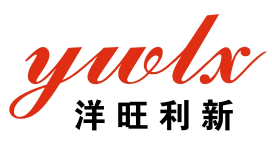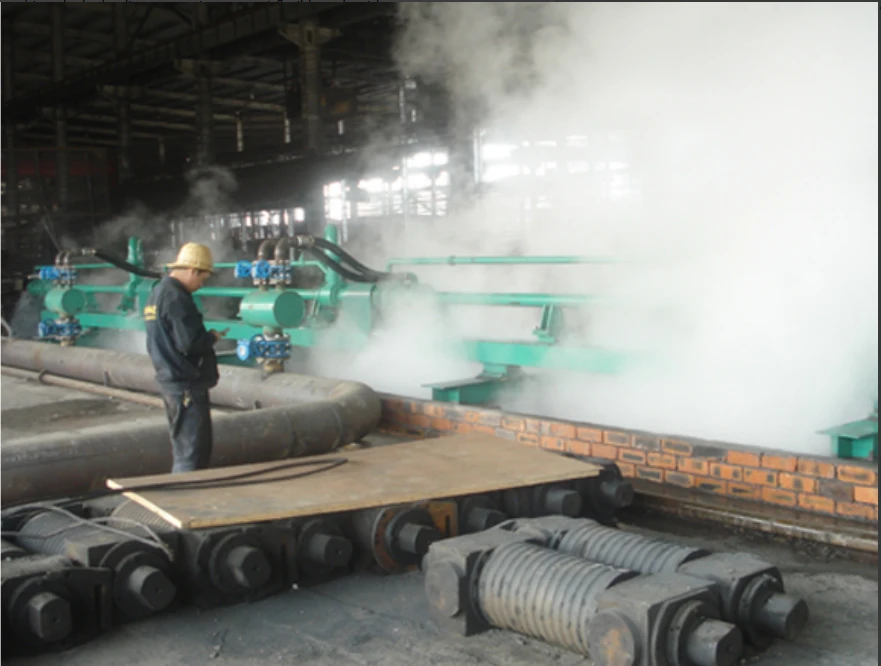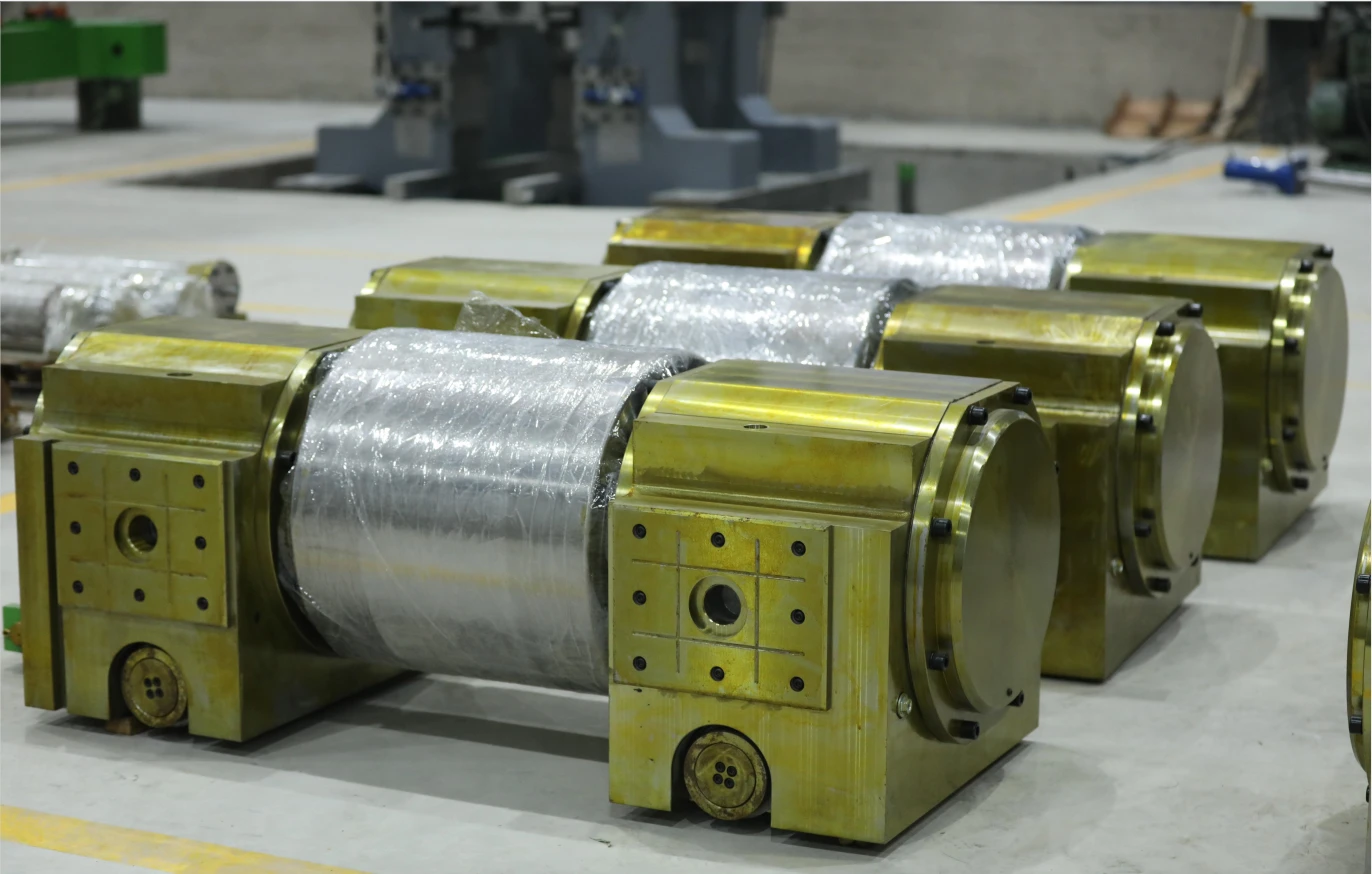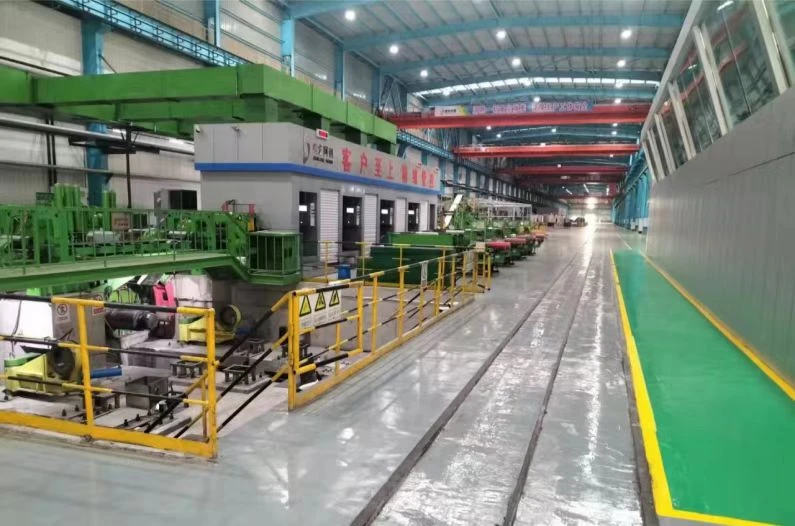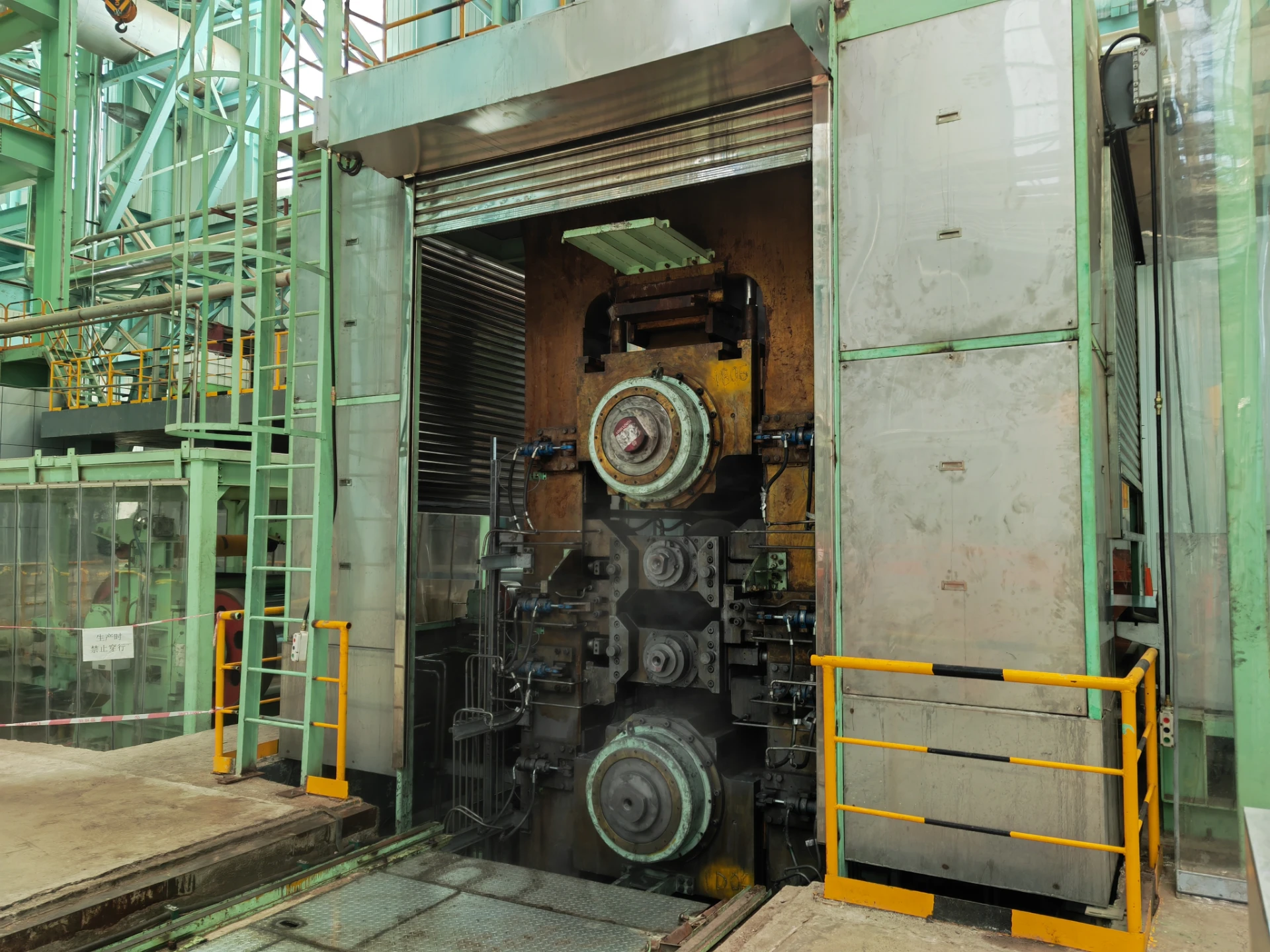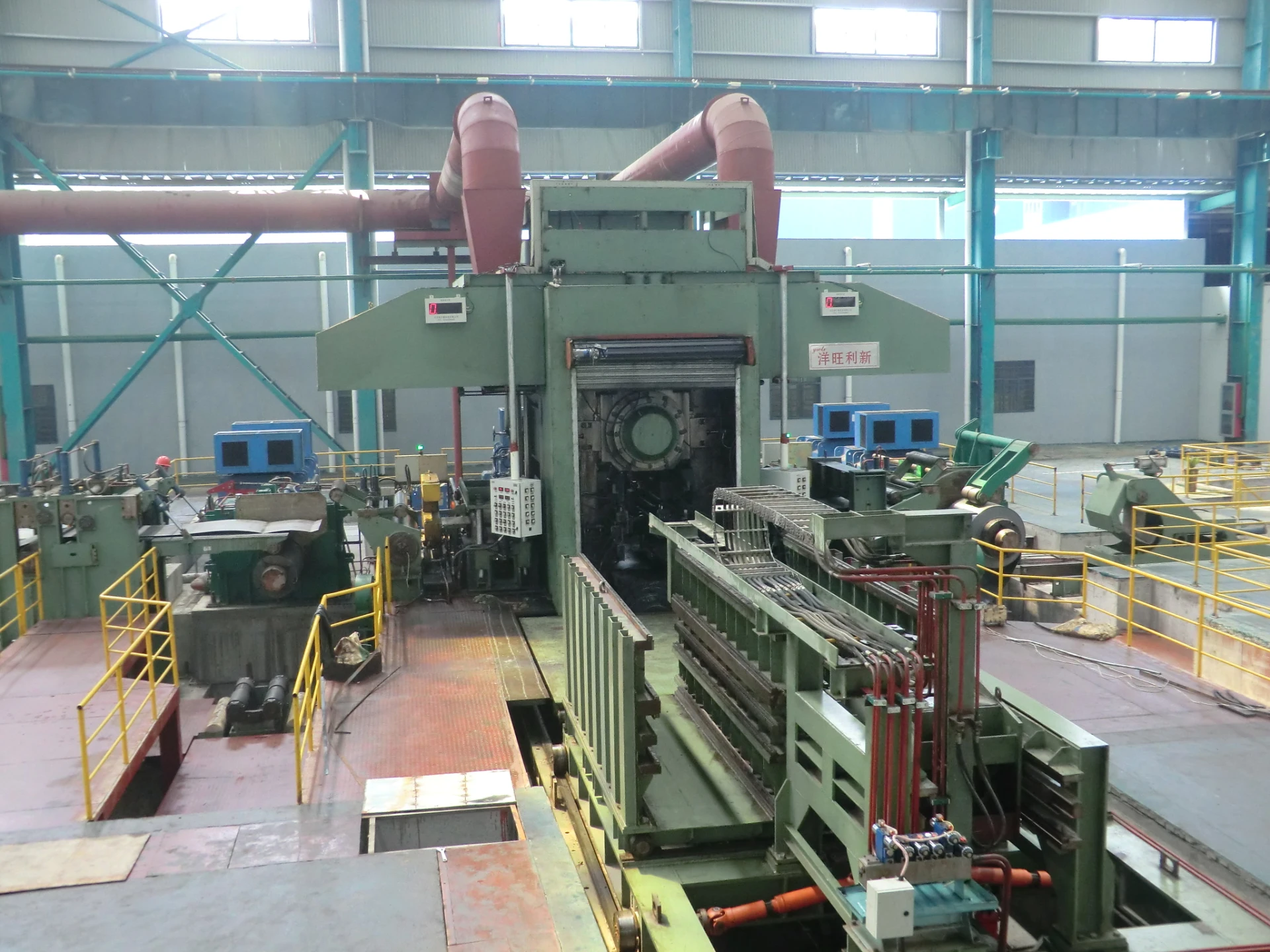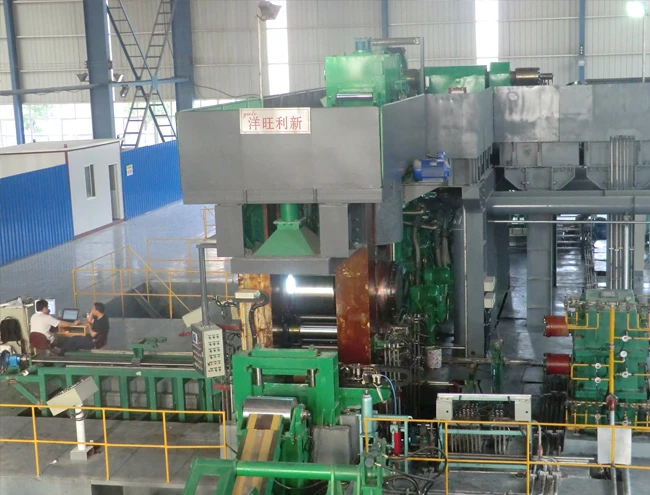
Roll Bonding Cladding Tech | Lightweight Solutions
Jul . 31, 2025 08:20
Back to list
Roll Bonding Cladding Tech | Lightweight Solutions
Roll bonding cladding is a pivotal surface engineering process for manufacturing bimetallic plates, tubes, and components essential in sectors like petrochemical, metallurgy, and infrastructure. As global industries shift toward higher quality, longevity, and environmental performance, hot roll bonding cladding and advanced roll bonding cladding equipment have rapidly become key drivers of innovation, cost-effectiveness, and product reliability. This article deeply explores technology parameters, competitive trends, manufacturing workflows, and global application cases — all centered around the flagship product: Cladding Rolling Mill.
Industry Insight:According to Mordor Intelligence, the global roll-bonded clad plate market size was valued at over USD 4.56 billion (2022), expected to grow at a CAGR of 5.7% through 2030, driven by robust demand in oil & gas, chemical, and desalination industries.
Major end-users require plates conforming to ISO 9001, ASTM B898, and ASME SA264.
Major end-users require plates conforming to ISO 9001, ASTM B898, and ASME SA264.
I. Roll Bonding Cladding: Key Technical Parameters
| Parameter | Typical Value | Industry Standard |
|---|---|---|
| Bonding Strength | >350 MPa | ASTM B898, ISO 15614 |
| Layer Thickness Tolerance | ±0.2 mm | GB/T 8165 |
| Surface Roughness (Ra) | <1.6 μm | ISO 8503-1 |
| Max Plate Width | Up to 3500 mm | Customized |
| Bonding Rate | ≥ 99.5% | ASME SA264 |
| Corrosion Resistance | Passes 720 hr NSS | ISO 9227 |
| Applicable Base Materials | CS, SS, Ni Alloys | DIN EN 10088, ASTM A240 |
| Clad Layer Materials | 304/316L, Ti, Cu, Ni, Al | On Demand |
II. Manufacturing Process: Step-by-Step Roll Bonding Cladding Workflow
1. Material Preparation
(Raw base plate & clad surface cleaning) 2. Stacking & Fixturing
(Alignment & vacuum degassing) 3. Preheating
Up to 1000°C (in furnace) 4. Rolling
Hot rolling mill (multi-pass, reduction 30–80%) 5. Bond Inspection
Ultrasonic & shear testing (ISO 15614-7) 6. CNC Finishing
Cutting, edge machining, surface brushing
(Raw base plate & clad surface cleaning) 2. Stacking & Fixturing
(Alignment & vacuum degassing) 3. Preheating
Up to 1000°C (in furnace) 4. Rolling
Hot rolling mill (multi-pass, reduction 30–80%) 5. Bond Inspection
Ultrasonic & shear testing (ISO 15614-7) 6. CNC Finishing
Cutting, edge machining, surface brushing
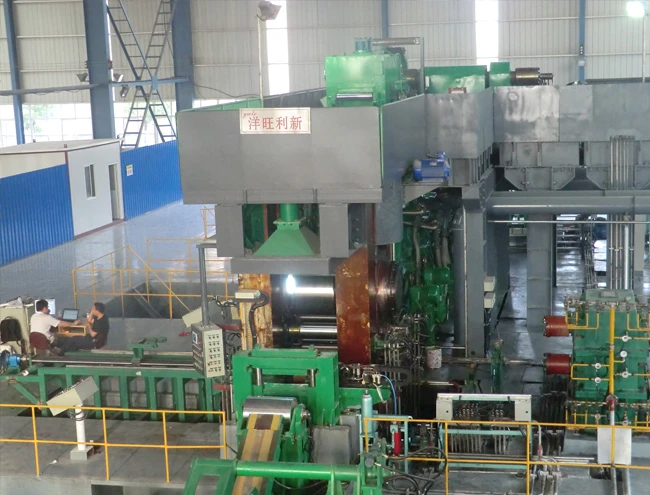
Illustration: roll bonding cladding process, key nodes highlighted
III. Product Focus: Cladding Rolling Mill
A. Materials & Process Engineering
- Material Options: Carbon Steel, Stainless Steel, Nickel alloys, Titanium, Copper
- Clad Layer: 304/316L, Inconel 625, Alloy 2205, Cu, Ti, Al, customizable
- Manufacture: Casting, forging, CNC cutting, and hot/cold rolling
- Surface Pre-cleaning: Shot-blasting, pickling (ISO 8501), SPM degreasing
- Inspection: Ultrasonic, X-ray, Hydrostatic test, per ISO 15614, ASTM A578
- Certification: ISO 9001, CE, ASME, PED, TUV, SGS
B. Application Industries
- Petrochemical, Oil & Gas pipelines
- Desalination, water treatment
- Power generation (boiler, HRSG)
- Pressure vessels, reactors
- Marine/offshore structure
- Metallurgy plants, mining
C. Cladding Rolling Mill: Major Technical Specs
- Max Rolling Force: 4000–7000 Ton
- Width Range: 700–3500 mm
- Thickness (Input): 8–150 mm
- Thickness (Output): 2–80 mm
- Max Line Speed: ≤15 m/min
- Layer Uniformity: Δ ≤ 0.15 mm
- Bond Rate: 99.8% (ultrasonic tested)
- Roll Material: Forged alloy steel (HRC 70+)
- PLC System: Siemens S7, ABB, Mitsubishi optional
- Life Cycle: Over 20 years, >10,000 operation cycles
IV. Industry Data Visualization: Market, Specs & Performance
Figure 1: Roll Bonding Cladding Market Share by Industry (2023)
Figure 2: Cladding Rolling Mill vs Traditional Mill: Technical Performance
Figure 3: Steel Clad Plate Exports (Main Regions, 2018–2024)
V. Global Manufacturer Comparison: Cladding Rolling Mill vs International Players
| Company | Main Product | Plate Width (mm) | Rolling Force (t) | Bond Rate (%) | Certification | Warranty |
|---|---|---|---|---|---|---|
| Beijing YWLX | Cladding Rolling Mill | 700–3500 | 7000 | 99.8 | ISO, ASME, CE | 3 yrs |
| SMS Group (DE) | Hot/Cold Plate Mill | 600–2800 | 4300 | 98.8 | ISO, TUV | 2 yrs |
| Danieli (IT) | Composite Mill | 1000–2500 | 5000 | 98.9 | CE, ISO | 2 yrs |
| POSCO E&C (KR) | Clad Plate Mill | 500–2000 | 4000 | 99.2 | ISO, KS | 1.5 yrs |
VI. Custom Solution Development & Application Showcases
Beijing YWLX provides fully tailored roll bonding cladding solutions as per unique production needs — from specific clad/base material pairing to process flow, PLC integration, and automated defect detection. A team with over 15 years' experience ensures solutions comply with ISO 9001, ASME, PED, GB150 etc. Project delivery includes on-site installation, commissioning, and operator training.
1) Oil & Gas Transmission
- Location: Sichuan LNG Terminal, China
- Scope: 6km clad pipeline (X70/MS) using roll bonding cladding
- Achievement: Corrosion incidents reduced by 88% (2-year data)
- Reference Standard: SY/T 6622, API 5LD
2) Desalination Equipments
- Location: Al-Khobar, Saudi Arabia
- Scope: 5mm Ti/CS bimetallic plates (Q235 + TA2)
- Achievement: 11.5% energy saving achieved (as per SGS audit)
- Main Process: Hot roll bonding cladding + CNC edge trimming
3) Chemical Reactor Retrofit
- Location: Gelsenkirchen, Germany
- Scope: Clad shell upgrade (16MnR+316L)
- Result: Service life extended 2.5x (documented by TÜV SÜD)
- Testing: UT, radiographic, shear per ISO 15614-7

VII. Technical Advantages of Roll Bonding Cladding and Clad Pipe Welding
- Uniform Metallurgical Bonding: Seamless interface layer, ensures high load & fatigue resistance
- Superior Corrosion and Wear Protection: Up to 30x life in saline, acidic environments (per ISO 9227 NSS, 720h)
- Design Flexibility: Clad layer thickness 1-30 mm, plate up to 3500 mm width
- Cost Effective: Base metals optimize strength, clad only where needed — saves 41–68% on high alloy costs
- Process Repeatability: PLC-automated control, online flaw detection (UT, FPI), batch-grade traceability
- Clad Pipe Welding: Specialized technology for overlap control, clad pipe welding ensures corrosion-free, pressure-rated piping per API 5LD/ISO 3183
- Environmentally Responsible: Hot roll bonding cladding reduces waste, CO2 emissions cut by 23% vs. traditional overlay welding
Customer Voice (Chevron Americas): "After adopting YWLX's cladding rolling mill, our turn-key clad plate output rose by 36%, and pipeline defect rate dropped below 0.1% — exceeding our former benchmarks and third-party audit targets."
VIII. Professional FAQs: Roll Bonding Cladding Technical FAQ
Q1. What are the primary materials used for base and clad layers in roll bonding cladding?
A: The base is mostly carbon steel, low alloy or boiler plate (e.g., Q235, SA516), while the clad layer can be austenitic stainless steel (304L, 316L), nickel alloys (Alloy 825/625), titanium, or copper. Selection is dictated by end-use corrosion and strength demands.
A: The base is mostly carbon steel, low alloy or boiler plate (e.g., Q235, SA516), while the clad layer can be austenitic stainless steel (304L, 316L), nickel alloys (Alloy 825/625), titanium, or copper. Selection is dictated by end-use corrosion and strength demands.
Q2. How is the bond quality between layers assured?
A: Each plate or pipe undergoes non-destructive testing (ultrasound per ISO 15614-7, etc.), shear testing, and local metallographic sampling. A minimum bond strength (>350 MPa, typically) is validated before release.
A: Each plate or pipe undergoes non-destructive testing (ultrasound per ISO 15614-7, etc.), shear testing, and local metallographic sampling. A minimum bond strength (>350 MPa, typically) is validated before release.
Q3. What is the typical clad-to-base thickness ratio and what tolerances can be achieved?
A: For plate, 2–20 mm clad over 8–120 mm base (ratio 1:5 to 1:20) is common. Using Cladding Rolling Mill control, thickness tolerances down to ±0.15 mm are achievable, surpassing standard hot rolling.
A: For plate, 2–20 mm clad over 8–120 mm base (ratio 1:5 to 1:20) is common. Using Cladding Rolling Mill control, thickness tolerances down to ±0.15 mm are achievable, surpassing standard hot rolling.
Q4. Which global standards are referenced for roll bonding cladding and clad pipe welding?
A: Major relevant standards: ASTM B898 (bonded clad plate), ASME SA264 (specification), ISO 15614-7 (weld qualification), API 5LD (clad line pipe), GB/T 8165 (Chinese bimetal plates).
A: Major relevant standards: ASTM B898 (bonded clad plate), ASME SA264 (specification), ISO 15614-7 (weld qualification), API 5LD (clad line pipe), GB/T 8165 (Chinese bimetal plates).
Q5. What are the recommended installation and inspection procedures for clad pipes?
A: Weld surfaces must be free of cracks and defects, with end prepping (beveling) per ISO 9692-2 or ASME B31.3. After clad pipe welding, UT and hydrostatic tests ensure integrity, and interlayer corrosion is checked according to client specs.
A: Weld surfaces must be free of cracks and defects, with end prepping (beveling) per ISO 9692-2 or ASME B31.3. After clad pipe welding, UT and hydrostatic tests ensure integrity, and interlayer corrosion is checked according to client specs.
Q6. What after-sales service and technical support does YWLX provide?
A: YWLX offers a 3-year mechanical & control system warranty for Cladding Rolling Mill, overseas commissioning, operator technical training, and lifetime remote diagnostic support with 24/7 quick-response hotline. Spare parts guaranteed for ≥10 years.
A: YWLX offers a 3-year mechanical & control system warranty for Cladding Rolling Mill, overseas commissioning, operator technical training, and lifetime remote diagnostic support with 24/7 quick-response hotline. Spare parts guaranteed for ≥10 years.
Q7. What is the typical delivery cycle, and what project documentation is supplied?
A: Typical lead time is 120–180 days ex-works, including FAT, painting, and main power-on testing. Documentation includes material certs, NDE/UT/visual inspection reports, PLC program backups, O&M manuals, and project as-built dossier per ISO/CE.
A: Typical lead time is 120–180 days ex-works, including FAT, painting, and main power-on testing. Documentation includes material certs, NDE/UT/visual inspection reports, PLC program backups, O&M manuals, and project as-built dossier per ISO/CE.
Delivery & Quality Commitment: All Cladding Rolling Mill systems are manufactured under ISO 9001 & ASME quality control; standard lead times 4–6 months; robust after-sales and 3-year warranty; technical response within 24 hours; assisted process optimization for client-specific production.
IX. References & Further Reading
- [1] "Roll Bonded Clad Plate Market – Growth, Trends, COVID-19 Impact, and Forecasts (2024-2030)", Mordor Intelligence, Link
- [2] ASTM International, "ASTM B898 - 11 Standard Specification for Reactive and Refractory Metal Clad Plate", Link
- [3] ASME, "Specification for Clad Steel Plate for Pressure Vessels", Link
- [4] China Bimetallic Plate Industry Forum, "Physical Performance Analysis of Hot Roll-Bonded Plates", Link
- [5] Offshore Technology, "Clad Pipe Welding Techniques and Failure Analysis", Link
- [6] Tian, Y. et al., "Defects and Testing of Roll Clad Plates", Journal of Materials Processing Technology, 2022, Link
Latest news
-
YWLX’s 1450mm Six-Hi Reversing Mill Goes Live in BangladeshNewsNov.24,2025
-
Adjusting Roll Gap in 6Hi Reversing Cold Rolling Mill for Thin StripNewsNov.13,2025
-
Quality Control Standards for Automatic Gauge Control in Strip RollingNewsNov.13,2025
-
Effect of Skin Pass Rolling on Metal DuctilityNewsNov.13,2025
-
Key Components of a Modern TempermillNewsNov.13,2025
-
Common Wear Patterns of Work Roll in Tandem Cold Mill OperationsNewsNov.13,2025
-
Revolutionary Skin Pass Rolling Technology for Enhanced Steel QualityNewsNov.04,2025
Related Products


